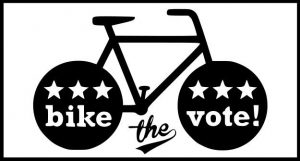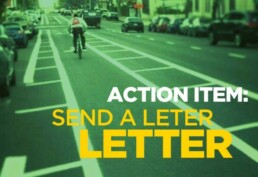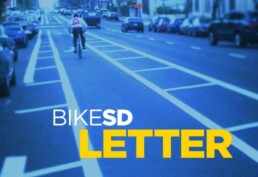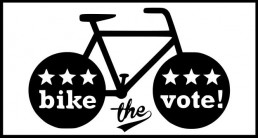Send a Letter to the Mayor & City Council to Show your Support for Creating More Slow Streets for People to Walk and Ride Safely
Send a Letter to the Mayor & City Council to Show your Support for Creating Safer Places for People to Walk and Ride Safely
A diverse group of organizations are requesting the Mayor and City Council provide adequate space & facilities for social distancing due to the COVID-19 crisis. With the decrease in vehicles on our streets, and the need to provide space for people to walk and ride safely, join us in requesting that this extra street space be used to provide safer conditions for everyone.
Click the green button below to can send a pre-written letter, or tell your own story and write your own.
Or…
EVEN BETTER:
Write your own personal message to kevinfaulconer@sandiego.gov. Modify this sample letter and copy/paste to your personal email app.
Dear Mayor Faulconer,
Thank you for taking action by beginning to implement Slow Streets during the current public health emergency in San Diego. Bold action is required to flatten the curve and ensure the safety of every resident of the city and more neighborhoods could benefit from Slow Streets.
My family and I use sidewalks and bikeways to access both essential services and get much needed outdoor recreation that provides both physical and mental health benefits. With the recent implementation of social distancing measures, however, it has become difficult for me and my family to walk and bike safely while ensuring proper 6 foot social distancing from other people doing the same. Meanwhile, the reduction in typical traffic means that our streets have cars that are driving faster than ever, making the choice between a crowded sidewalk or bikeway and fast-moving vehicular traffic both difficult and dangerous.
To mitigate these challenges, I request that the city considers the health and safety of all residents, and reallocate the extra street space from the reduction in vehicular traffic for the use of people walking and biking in more neighborhoods. This can be done by placing “no through traffic” signs on some streets, and reducing the number of vehicular lanes and increasing pedestrian and bicyclist space on others. Furthermore, I request that the city automate the pedestrian walk lights at traffic intersections across the city, because it is not safe to press pedestrian walk buttons and to practice safe hygiene.
I would like to see San Diego join the ranks of other forward-thinking cities implementing similar actions, such as Oakland, CA (Oakland is adding 5 miles of Slow Streets per week), Burlington, VT, Boston, MA, Denver, CO, and many other cities. I support the joint letter sent out by the diverse coalition of advocacy organizations here in San Diego and would like to see a hyperlocal walking & biking network in my community.
Thank you again for your strong leadership during this critical time for not only the City of San Diego, but the world at large. Thank you for beginning the implementation of Slow Streets. I look forward to seeing our city continue to take bold and immediate action in fighting the spread of COVID-19, and continue to ensure the health and safety of residents.
Sincerely,
_____________
And feel free to add these important CCs:
barbarabry@sandiego.gov, jennifercampbell@sandiego.gov, chriscate@sandiego.gov, christopherward@sandiego.gov, monicamontgomery@sandiego.gov, markkersey@sandiego.gov, scottsherman@sandiego.gov, vivian@vivianmorenosd.com, georgettegomez@sandiego.gov, talk@bikesd.org
Letter to the Mayor re: District 2 Recommendations for Transportation Actions as COVID-19 Response
“Given the emergency physical distancing requirement, coupled with fewer cars on our roads, we need to acknowledge that people will be outdoors for a little personal exercise, and our responsibility is to make sure that it happens in as safe a manner as possible,” said Councilmember Dan Kalb, chair of the City’s Public Works Committee.The City of Oakland will work closely with neighborhood residents and community organizations to install signs and temporary barricades along Oakland Slow Streets and at key intersections. Residents will also be encouraged to print Oakland Slow Street signs and post them in their neighborhoods.
-
Mission Blvd from Pacific Beach Drive to South Mission
-
PB Pathways: Phase 1 and 2 (See attached map.)
-
Sunset Cliffs Blvd and Cordova Street south of Point Loma Blvd. (This will drastically improve the safety concerns of overcrowding on the cliffs.)
-
Bacon Street from Robb Field to Del Monte
-
Brighton Street from Spray Street to Guizot Street
-
Evergreen Street from Nimitz to Talbot
-
Mission Blvd from Law Street to Pacific Beach Drive
-
West Point Loma Blvd. from Nimitz to Sports Arena
-
Midway Drive
-
Morena Blvd
-
East Mission Bay Drive and Mission Bay Drive
-
Mission Blvd from Pacific Beach Drive to South Mission (This would be an addition or alternative to the above recommendation. Provide a secured parking lot for residents to use if residents have parking issues.)
-
The north-south bike path on the eastern edge of Robb Field and the car travel lane out to West Point Loma Blvd. (Currently, active commuters have no safe access out of OB.)
-
Old Sea World Drive (Restrict vehicles but allow active commuters.)
Letter to the Mayor re: Recommendations for Active Transportation Actions as COVID-19 Response
BikeSD sent the following letter to the Mayor and City Council of San Diego in coordination with several other advocacy & community organizations.
---
Dear Mayor Faulconer,
On behalf of the undersigned transportation and community-based organizations, we are writing with recommendations for how to address the public health crisis resulting from the COVID-19 pandemic through addressing transportation needs. Our recommendations aim to aid essential travel needs for individuals and household units and relieve pressure from overcrowded sidewalks; in no way do we aim to encourage group activities with these recommendations.
Based on the need to allow for safe physical distancing of at least six feet to reduce the risk of transmission, we recommend the following immediate actions be taken:
- Modify Pedestrian Signal Activation - Most streets with pedestrian crossing buttons require that they be pushed to change the light and activate the walk sign. Some streets provide more time to cross the street safely when the pedestrian crosswalk button is activated. Yet no one should need to push a button – and risk spreading the virus – to cross the street safely during this pandemic.Pedestrian crosswalk buttons should be switched to automatically provide the walk sign to a pedestrian without having to press it, citywide.
- Prioritize Pedestrian and Bicyclist Safe Travel on Crowded Corridors - People are walking and cycling, either for essential travel needs or for their physical and mental health. At the same time, car travel and congestion has significantly declined. We recommend that you take action to provide appropriate safe space for people by widening walking space and opening streets where pedestrian overcrowding already is occurring and where people access essential needs such as grocery stores by walking, cycling, or accessing transit.Issues relating to enforcement in communities of concern remain and it will be vital for San Diego to implement these safe physical distancing measures equitably. We do not want these safe streets measures to result in additional enforcement in communities of concern. The city should not issue additional citations and no additional police presence should be allocated.
In no way do we desire to impede the travel needs for essential workers, many of whom are residents in underserved communities. Emergency vehicles and residents who live on those streets will still be able to access the roads by motor vehicle.We recommend opening the streets by removing one or more parking or travel lanes on the following three corridors immediately, followed by continued deployment of more corridors:
- 6th Avenue
- Mission Boulevard
- University Avenue
- More corridors and networks based on existing demand and planned networks which have already received community buy-inThese recommendations are a first step towards addressing transportation needs that must be implemented as soon as possible, with an eye towards scaling up. Next steps include analyzing additional corridors and connected routes to ensure safe travel in communities across the City of San Diego by using signage to close some streets to through traffic while still allowing necessary vehicular traffic. We are available to work collaboratively with the City to identify next phases of the transportation response to the COVID-19 crisis.
- Reduce Speeds to 20mph in Transit Priority Areas - Reducing speed of traffic to 20mph in Transit Priority Areas can improve safety for all essential trips. Likeliness of slight, serious, and fatal injuries increases exponentially for pedestrians when hit by a motorist travelling faster than 20mph. Reducing speed of car traffic will prevent serious injuries, which reduces the volume of people making emergency hospital visits that are not COVID-19 related.We recommend 15mph speed of traffic on corridors that may become partially opened.
- Community Engagement - We recognize that during this pandemic traditional community engagement must adapt to the shelter-in-place directive. We encourage the City to develop creative community engagement strategies in collaboration with community based organizations along the proposed routes. It is important that essential businesses along the proposed routes and essential workers not be negatively impacted. This is especially critical in communities identified in the City of San Diego’s Social Equity Index who have been historically excluded and who are disproportionately vulnerable to COVID-19 impacts.
We thank you for your strong leadership during the COVID-19 pandemic. We urge you to take the above actions to further flatten the curve and reduce unnecessary loss of life.
Signed,
Maya Rosas
Director of Policy
Circulate San Diego
Andy Hanshaw
Executive Director
San Diego County Bicycle Coalition
Susie Murphy
Executive Director
San Diego Mountain Biking Association
Judi Tentor
Executive Director
BikeSD
Tara Hammond
Founder & CEO
Hammond Climate Solutions
Joyce Lane
Public Policy Team Co-Chair
SanDiego350
Randy Torres-Van Vleck
Senior PM, Transportation & Planning
City Heights CDC
Ginger Partyka
Rise North Park
Patrick Santana
Rise Up Town
Noah Harris
Transportation Policy Advocate
Climate Action Campaign
Marissa Tucker
President
YIMBY Dems of SD
Connor Franklin Rey
Partnerships Team Lead
Sunrise Movement San Diego
CC:
Council President Georgette Gómez
Council President Pro Tem Barbara Bry
Councilmember Jennifer Campbell
Councilmember Chris Ward
Councilmember Monica Montgomery
Councilmember Mark Kersey
Councilmember Chris Cate
Councilmember Scott Sherman
Councilmember Vivian Moreno
Letter to the Mayor re: Street Safety During COVID-19 Social Distancing
BikeSD sent the following letter to the Mayor of San Diego:
Dear Mayor Kevin Faulconer,
BikeSD would like to applaud your leadership and thank you for taking swift action to help flatten the curve here in SD. These are very challenging times for all, and everyday you are making decisions for the health of our residents, we thank you and want to offer our support.
We understand why parks, beaches and trails were closed. Trails are narrow and social distancing was difficult. People rely on walking and bicycling around their neighborhoods to stay active during the shelter-in-place order, yet typical space allocation for sidewalks and bicycles does not accommodate the minimum six feet of distance.
To support the safety of vulnerable road users, promote the health of our residents, and aid economic resiliency, BikeSD would like the City of San Diego to restrict vehicular traffic on selected streets to allow people to bike, walk and run safely on those streets. With fewer people driving to work, and others avoiding the cost of gasoline purchases, our streets are less crowded than normal, creating an opportunity to temporarily repurpose street space. By rapidly expanding our bicycle infrastructure we can provide/promote:
- A safe way for people to move about the city while maintaining proper distancing.
- An affordable means to access essential services for those most impacted by acute loss of income in the near to intermediate future
- Outdoor exercise to balance the physical and mental effects of sheltering in place.
New York City, Minneapolis, Denver, & Philadelphia, exemplify quick rollouts for bicycle and pedestrian infrastructure in adaptation to the COVID19 emergency (see here for larger discussion). We have the advantage of favorable geography, climate, and many existing streets with wide lanes with which to work towards a similar goal. With a decrease in vehicular traffic, traffic speeds are up, as noted in Los Angeles, and in San Diego, where the CHP reports freeway collisions now disproportionately require ambulance responses. At a time when our hospitals and emergency medicine responses are stretched thin, we can take proactive measures to reduce the likelihood of serious traffic injuries requiring those same scarce resources. New York experienced a 43% incident increase in bicycle collisions during the pandemic, while overall traffic collisions are down 33% relative to this time last year - motivating their emergency roll out of bike infrastructure.
Poorer neighborhoods are historically underserved by bicycle infrastructure, while often the most in need of affordable/free transportation in times of crisis. As our economy shifts for the uncertain, and MTS reduces its service due to lower ridership, bicycling becomes a more appealing economic imperative. For example, during the Great Recession, bicycle commuting in NYC shot up 26%. Conservative estimates of savings from foregoing a car and travelling by bike are 4,000-10,000 per year which is larger than the proposed $1,200 check being sent out to families. This savings is then spent in communities which will help stimulate local businesses.
Much of this could be accomplished by:
- Designating additional bicycle and pedestrian space for all SANDAG EAP projects (including Pac Hwy)
- Designating additional bicycle and pedestrian space for the entire network for the downtown mobility plan.
- The creation of a mechanism for communities to request opening additional streets to pedestrians/bicyclists so as to increase inclusivity of these measures.
We support the community, residents, and leadership to overcome the disruption that COVID19 is causing, and adapt to the changing needs. This is a critical moment where we can adopt a healthier, cleaner, and safer environment. We know you understand the joys of riding a bike and we want to support your team to create streets for people. We believe this will help SD residents adapt and build resiliency in our ever changing world.
2020 VOTE - North Park Planning Group
 BikeSD Endorses Rise North Park Candidates for North Park Planning Group
BikeSD Endorses Rise North Park Candidates for North Park Planning Group
We support these candidates for the Community Planning Groups (CPGs) in North Park and Uptown (Hillcrest, Mission Hills, and Bankers Hill) because CPGs have a powerful influence on many aspects of the built environment of our communities. In the past we have had bikeway projects die because CPG board members were resistant to approving these kinds of projects. In order to make our streets safer, we need to elect board members who will support Complete Streets and other projects that increase mobility options. Here are the candidates that will help make our communities better for pedestrians and families riding bicycles.
BikeSD has endorsed all the candidates running as collectively as "Rise North Park" running for election on March 17, 2020 for North Park Planning Group. The Rise North Park Candidates are running on the values of transit choice and creating housing of all types, while supporting the growing economy in North Park. To be eligible to vote in the upcoming election North Park residents must have signed in to one North Park Planning Group Meeting in the past twelve months. The last meeting before the vote is this Tuesday, February 18, 2020. If you support increased mobility options in North Park like 30th Street or the SANDAG Projects then come out to Waypoint Public this Tuesday at 6:30 and meet the Rise North Park Candidates before signing into the NPPG meeting next door. Don't worry it only takes 10 minutes!
RISE NORTH PARK CANDIDATES:
Ginger Partyka

I’ve been a homeowner and resident of North Park since 2015. I’m a strong proponent and user of local businesses and hope to support a community framework in which those businesses can continue to thrive. I’m a passionate advocate of reducing traffic, improving community interactions, and increasing affordable housing through increasing housing and transportation choice. I love the atmosphere of our dense and vibrant community and want to support planning that furthers increased face-to-face interactions between North Park’s members. I’m very excited about the opportunity to serve the North Park residents on the planning committee.
Beau Benko

My name is Beau Benko and I’m running for the North Park Planning Committee because I want to support and represent North Park. There’s a lot I love already in North Park, from the community and the people to the businesses, and the spots to view a great sunset. But I believe North Park still has incredible potential for growth. I believe in more housing for more neighbors and I believe we need to work toward a world with no pedestrian deaths. I believe we can support more local businesses and that everyone benefits when multiple modes of transit are supported.
Rebecca Lieberman

I am running to be on the North Park Planning Committee because I want to become a more involved member of my vibrant North Park community. I live with my partner, Ben, and our sheepadoodle puppy, Woody, in the southwest corner of the neighborhood. We moved to San Diego when Ben received orders to the USS San Diego, stationed out of the 32nd Street Navy Base. Ben and I chose to live in North Park for many reasons: we love its historic homes, diversity of restaurants, and plethora of breweries. However, the key reason we chose North Park is because we could both bike to work and walk to dinner.
As a city planner by trade, I seek to live in and create vibrant and livable urban spaces. In my current role as a policy advisor at the San Diego Regional Chamber of Commerce, I understand the importance of small businesses, affordable homes, and an array of transportation options to our regional economy. I believe North Park is one of the most unique neighborhoods in San Diego because of its strong local economy, walkable streets, and proximity to Balboa Park and I hope to use my seat on the planning committee to lift up and support the parts of the neighborhood that I love.
Jessica Ripper

I am running to be on the North Park Planning Committee I moved to San Diego six years ago, already passionate about building communities that are great places for diverse people to live, work, play, and learn. Since then, I’ve transitioned from a 15-year career working with nonprofits and philanthropy to a new role consulting on housing and community development. These experiences help me to explore ideas from multiple perspectives to help bring about solutions that meet current community needs while maintaining the flexibility to adapt to a changing environment. I’m also thrilled that my family will finally be moving into our home in the heart of North Park this summer.
Marissa Tucker

As an avid pedestrian, I’ve come to appreciate North Park’s craftsman’s, garden apartments, even its infamous Huffman 6-packs, and the new stark modern marvels: They all tell the story of a North Park that is always evolving. As we move toward the future we look to North Park’s past for guidance: it’s willingness to change in order to ensure that North Park remains a strong working and middle class neighborhood where families of all income levels can thrive.
As San Diego faces a housing crisis, we know that we need to ensure we’re building affordable housing for those just starting families and those who wish to retire in our amenities rich neighborhood. But we also face a climate crisis. As we transition away from fossil fuels, we need to ensure we create safe infrastructure to allow people to choose active transit options such as walking, biking, scooting, and busing. As the YIMBY Democratic San Diego club president and Rise North Park founder, I’m not satisfied with just voting, I’m committed to leading on these values.
Daniel Molitor
 As an avid pedestrian, I’ve come to appreciate North Park’s I chose to make North Park my home after growing up in Indiana and spending five years in the Bay Area. I fell in love with North Park’s lively yet relaxed character and its wonderful vibes. As a progressive neighborhood, we should be leading the fight against climate change: We have to fight sprawl and long commutes, and that means building more homes near where the jobs are and where people want to be. We also need to make it easier to develop car-free habits of getting around. That means taking the opportunity when planning infrastructure and development to prioritize buses and protect people whether they’re walking, biking, scooting or skating. My vision of North Park preserves its vibes and essence while beautifying our built environment, cleaning the air, and improving the safety of our public spaces.
As an avid pedestrian, I’ve come to appreciate North Park’s I chose to make North Park my home after growing up in Indiana and spending five years in the Bay Area. I fell in love with North Park’s lively yet relaxed character and its wonderful vibes. As a progressive neighborhood, we should be leading the fight against climate change: We have to fight sprawl and long commutes, and that means building more homes near where the jobs are and where people want to be. We also need to make it easier to develop car-free habits of getting around. That means taking the opportunity when planning infrastructure and development to prioritize buses and protect people whether they’re walking, biking, scooting or skating. My vision of North Park preserves its vibes and essence while beautifying our built environment, cleaning the air, and improving the safety of our public spaces.



